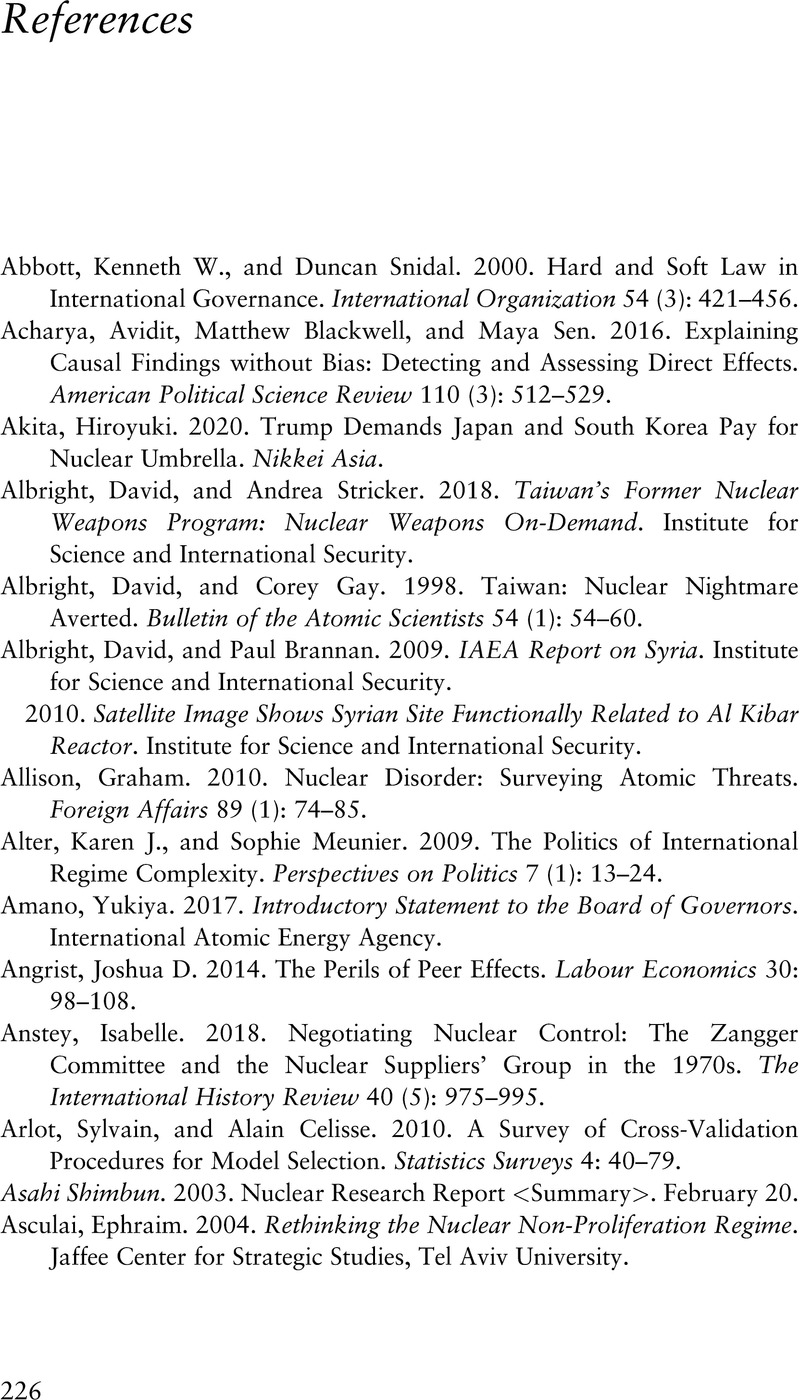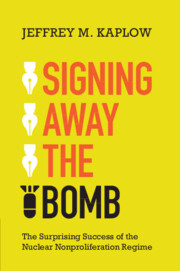Book contents
References
Published online by Cambridge University Press: 08 December 2022
Summary

- Type
- Chapter
- Information
- Signing Away the BombThe Surprising Success of the Nuclear Nonproliferation Regime, pp. 226 - 256Publisher: Cambridge University PressPrint publication year: 2022

